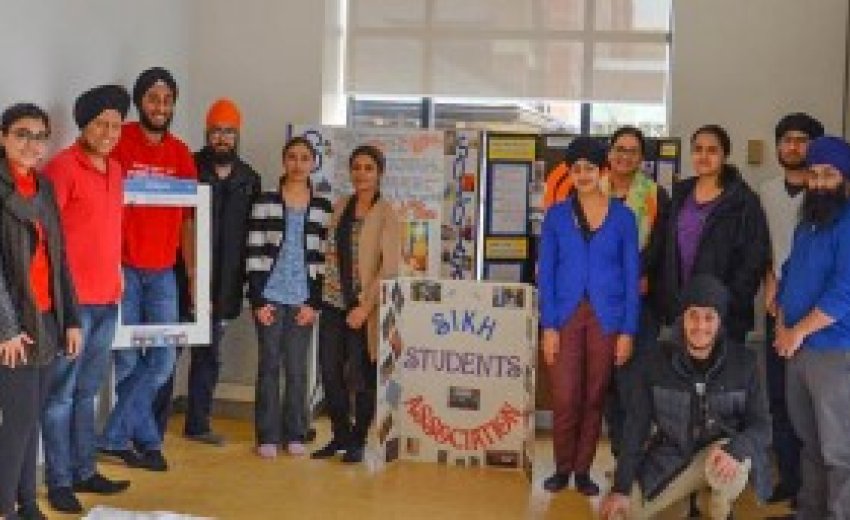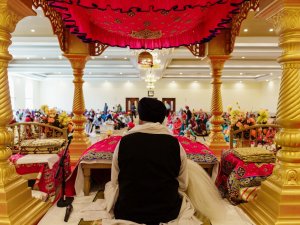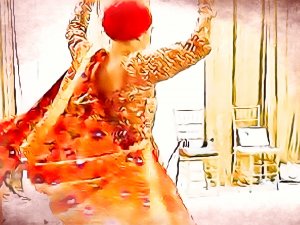
Kaur Stories Inspire Toronto Students
March 24, 2016: This past Friday saw the finale of the University of Toronto’s third annual Sikh Awareness Week, hosted by its chapter of the Sikh Students Association. While many of the week’s activities were iterations of popular events hosted during similar campaigns—such as turban tying and langaar—one particular occasion stood out as a highlight, both for its novel and powerful quality.
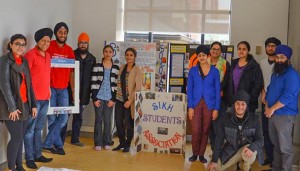 On March 15th, sangat gathered in Hart House, located at the University of Toronto’s St.ciation—previous years’ discussions having focused on Sikh contrib George campus, for a speaker series onWomen in Sikhi—exploring the feminine perspective, and creating an opportunity for her voice to manifest. This was the first of its kind for the Sikh Students Assoutions to World War efforts. However, event organizers Samriti Chandi, Simran Ghoman, Sakhi Kaur and Malkeet Sandhu, recognized the importance of using this platform to consciously remind our community about the egalitarian tenants of Sikhi, surrounding equality and mutual respect amongst Kaurs and Singhs—and also to encourage young women to increasingly discover and demonstrate their strength and agency as saint soldiers.
On March 15th, sangat gathered in Hart House, located at the University of Toronto’s St.ciation—previous years’ discussions having focused on Sikh contrib George campus, for a speaker series onWomen in Sikhi—exploring the feminine perspective, and creating an opportunity for her voice to manifest. This was the first of its kind for the Sikh Students Assoutions to World War efforts. However, event organizers Samriti Chandi, Simran Ghoman, Sakhi Kaur and Malkeet Sandhu, recognized the importance of using this platform to consciously remind our community about the egalitarian tenants of Sikhi, surrounding equality and mutual respect amongst Kaurs and Singhs—and also to encourage young women to increasingly discover and demonstrate their strength and agency as saint soldiers.
One of the biggest strengths of the evening was its vast variety—of speakers, and guests. Authors, editors, artists, educators, and activists were all represented by the accomplished and inspiring women who shared their work and their words. Equally as important, the audience was made up of women and men, young and old, Sikh and other faith, individuals. This diversity of backgrounds and perspectives was a quality necessary for the event’s purpose to be fulfilled, as its potential comes not only from impacting those who attended in person, but that they will be inspired to share the spirit of the event with others.
The theme of the night emerged as storytelling—how the tools of narrative can be used to highlight, explore, and comprehend our experiences and their meanings. To begin, Dr. Sharanpal Ruprai from the University of Winnipeg read from her debut collection of poetry—which was shortlisted for the Stephen G. Stephansson Award, providing a valuable and distinctive medium to explore issues of culture, gender, and ritual that affect the life of a Sikh girl. Next, Valarie Kaur, an award-winning filmmaker, author, lawyer, and international faith leader talked about her journey, and provided empowering advice to young people: to find the Guru, develop one’s sword and shield; and walk with Sangat.
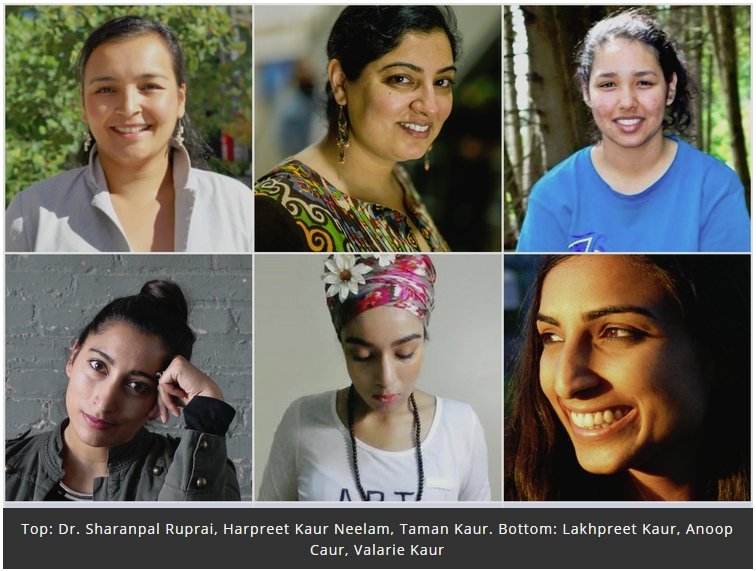
Afterwards, Kaur Life’s editor-in-chief Lakhpreet Kaur, a skilled writer and tireless advocate, shared a moving call for all Kaurs to think and speak about their experiences in a greater universal context. Her encouragement of Sikh women’s involvement in narrative emphasized the elements of community and agency that were central to the event. Following, SAFAR’s Harpreet Kaur Neelam gave an engaging and personal presentation on her return to Punjab after seventeen years. The treatment of thoughtful and consequential contemporary issues—widows of farmer suicide, obstacles to girls’ education, displacement of Sikh Afghan refugees, and the exclusionary treatment of women at Harmandir Sahib—with vigor and optimism was meaningful, relevant, and effective; allowing the evening to extend out into the truth of universal unity. Lastly, two local young artists, Anoop Caur and Taman Kaur closed the night with their stories on the culture of Sikh girls growing up in North America, and how that has impacted and challenged their work. They also premiered their community outreach program to support Sikhs who have settled in Toronto, through social services and art therapy.
The greatest marker of the event’s success was seeing the audience stay well past its end to talk about all that was shared, and how they felt in reaction. One attendee, Mala Kashyap shared how the theme of the night and its location existed in a special relationship, and was especially significant for her. Hart House, opening at the University of Toronto in 1919, exists as a center for student activity, yet denied women membership until 1972. The building’s history and the emotional tension that surrounded this place for Kashyap’s mother while she attended the University helped to emphasize the importance of events like this one. Discussing Women in Sikhi at Hart House demonstrates how much has been accomplished by those who have come before us, while also serving as a reminder to how critical it is for us to continue this work forward.
Another moment that resonated with the audience was when Harpreet Neelam asked everyone to define what a Sikh Feminist is. The youngest Kaur in attendance said being a Sikh feminist is about “doing the right thing,” while others explained the term as “equality” and what “Guruji taught us.” Sakhi Kaur said she, “…loved when someone from the audience explained Sikh feminist as redundant because being a Sikh makes you a feminist. It perfectly encompassed the event, and I hope with small efforts like these it will eventually make the theoretical equality a reality.”
The evening was one filled with celebration, contemplation, and above all, a call to act. The message of agency, to take real action in welcoming and embracing the voice of Kaurs in sacred spaces, in leadership, and across all contexts, cannot be undervalued.
The Sikh Students Association of University of Toronto St. George, and event organizers would like to thank everyone who participated in the event and in the dialogue that grew forth. To see more moments from this event, please visit Facebook, Twitter, and Instagram @utsgssa.
